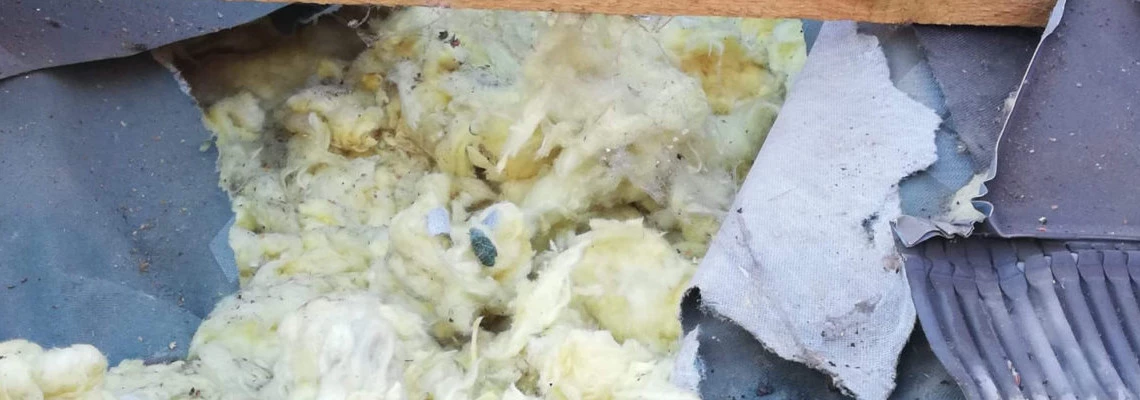
WHAT CAN GO WRONG WITH INSULATION?*
Almost all insulation materials used in UK homes have a range of advantages, but unfortunately, they also come with drawbacks. When choosing any of them, you need to be aware of what it entails and whether you've made the right decision in selecting insulation.
In this article, we will present the main disadvantages of insulation commonly used in the UK market. These will include mineral wool, associated with skin irritation, PIR, known for its challenging-to-cut material, XPS, recognized for being a costly, colourful version of styrofoam, EPS, commonly used in external wall insulation and unfortunately attractive to mice and pests, and phenolic boards, often associated with rust issues. Additionally, we will discuss potential issues that can arise with insulation.
WHAT DOES BAD INSULATION LOOK LIKE?
Poor insulation primarily means wet insulation. Its appearance differs from its dry part; it often changes dimensions, becomes as heavy as water, and feels cold when touched. This is the best way to describe poor insulation. Some may describe bad insulation as loose structural material, and they're not wrong.
It's essential to remember that water is insulation's biggest enemy. Unaddressed water leaks, a damaged roof, or a clogged gutter can quickly lead to insulation damage and the need for replacement. Nearly 80% of insulation available on the market is not suitable for reuse once it gets wet. Therefore, it's crucial to monitor the condition of your home's insulation every 2-3 years. Early detection of leaks can save us from numerous problems, not just financial ones.
THE UNSEEN CONSEQUENCES: HOW AGEING TRANSFORM YOUR INSULATION
Insulation is a vital component of any well-constructed building, contributing to energy efficiency, comfort, and environmental sustainability. However, like any construction element, insulation can face various issues that compromise its effectiveness. Insulation materials can deteriorate over time due to factors like UV exposure, extreme temperatures, or chemical reactions.
MINERAL WOOL
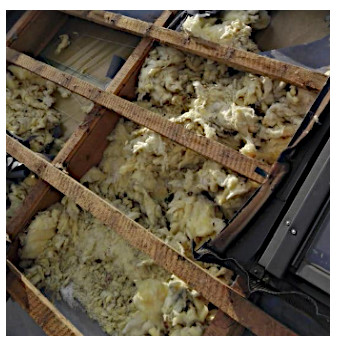 Mineral wool has been used as an insulation material for years. It comes in two forms: rock wool and glass wool. Glass wool is produced from glass, while rock wool is made from pieces of rocks. Generally speaking, glass wool is the cheaper than polystyrene and rock wool. However, it is highly susceptible to the negative effects of water. What's worse, once glass wool is soaked, it never dries completely, unlike rock wool, which takes about 30 days to dry out completely.
Mineral wool has been used as an insulation material for years. It comes in two forms: rock wool and glass wool. Glass wool is produced from glass, while rock wool is made from pieces of rocks. Generally speaking, glass wool is the cheaper than polystyrene and rock wool. However, it is highly susceptible to the negative effects of water. What's worse, once glass wool is soaked, it never dries completely, unlike rock wool, which takes about 30 days to dry out completely.
Glass wool is not as rigid as rock wool, which can lead to gradual settling over the years, creating thermal bridges. Therefore, it is often recommended to replace glass wool after approximately 10 years. One of the main drawbacks of glass wool is the small fibres that can cover almost everything in your attic. These tiny particles can irritate human respiratory systems, strongly irritate the skin, and make it inhospitable for human occupancy.
To summarise, one of the main drawbacks of glass wool is its tendency to settle over time and its high absorbency. However, these disadvantages are offset by its high fire resistance. To learn more about the main differences between rock wool and glass wool, click here.
WHAT CAN GO WRONG WITH MINERAL WOOL?
Skin Irritation: the tiny glass or rock particles in mineral wool can irritate the skin, leading to itching and discomfort.
Gradual settling over the years: settling can lead to gaps in the insulation, impacting energy efficiency if not addressed through maintenance or reinstallation.
EPS EXPANDED POLYSTYRENE
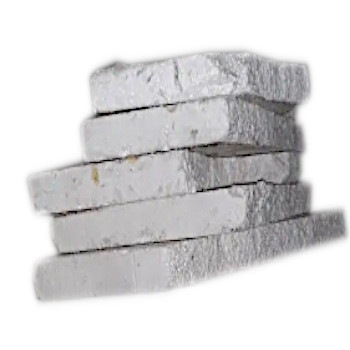 EPS, also known as expanded polystyrene, is characterised by a high air content being warm material with large open pores.
EPS, also known as expanded polystyrene, is characterised by a high air content being warm material with large open pores.
Unfortunately, its open structure makes it extremely vulnerable to water and vapour penetration. It is highly absorbent, and water left in it for an extended period can pose serious problems in terms of evaporation.
Expanded polystyrene is also susceptible to mice, providing excellent conditions for them to settle and reproduce. We've already discussed how mice can thrive in polystyrene in article ‘DEFEND YOUR HOME’
Furthermore, when exposed to sunlight, expanded polystyrene begins to degrade after just six months, changing colour to yellow and becoming structurally weak. Worst of all, it is highly flammable at temperatures as low as 80℃ . Therefore, it should not be placed around, for example, gas chimneys. Additionally, in prolonged exposure to temperatures below 80℃, EPS can shrink and deform by up to 20mm.
When expanded polystyrene (EPS) is covered with an External Wall Insulation (EWI) system, such as a thin coat render, it becomes completely resistant to sunlight and prevents mice from infiltrating into the EPS core. It also remains weather-resistant, and when coated with a silicon render, it forms an impenetrable barrier.
WHAT CAN GO WRONG WITH EPS POLYSTYRENE?
-Attractive to Mice and Pests: they may chew through it to create nests, potentially compromising the insulation's effectiveness and leading to pest infestations.
-EPS is susceptible to degradation when exposed to sunlight: after about six months of exposure, it can begin to break down, reducing its insulating properties and overall lifespan.
-Melting point: EPS has a relatively low melting point, and it can deform when exposed to temperatures above 80℃ (176℉). This limitation makes it unsuitable for applications where high temperatures are a concern.
XPS EXTRUDED POLYSTYRENE
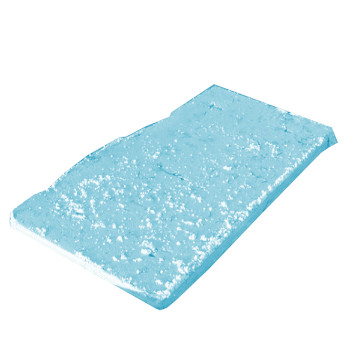 XPS, known as extruded polystyrene, contains large amounts of air similar to EPS, but its cells are closed. In other words, there are no spaces between them, making it a highly compression-resistant product. This is why it's suitable for insulating garage floors and underground parking areas. Its closed-cell structure does not allow water to penetrate, making it highly water-resistant. However, XPS is easily flammable and very brittle. It can be easily broken with hands. Time is not a threat to this type of insulation as long as it is shielded from direct sunlight. Its widely known applications in floors and underground areas mostly eliminate the possibility of damage from sunlight. Compared to PIR boards, XPS is produced in smaller dimensions, typically 1200x600.
XPS, known as extruded polystyrene, contains large amounts of air similar to EPS, but its cells are closed. In other words, there are no spaces between them, making it a highly compression-resistant product. This is why it's suitable for insulating garage floors and underground parking areas. Its closed-cell structure does not allow water to penetrate, making it highly water-resistant. However, XPS is easily flammable and very brittle. It can be easily broken with hands. Time is not a threat to this type of insulation as long as it is shielded from direct sunlight. Its widely known applications in floors and underground areas mostly eliminate the possibility of damage from sunlight. Compared to PIR boards, XPS is produced in smaller dimensions, typically 1200x600.
The majority of builders consider it a heavy material to cut, likely due to its high density, which is typically above 300 KPa. or more. To find out how to cut XPS polystyrene click here.
Just like standard EPS, it doesn't perform well in high temperatures, especially above 80 ℃. Therefore, it's not advisable to install electrical cables inside it.
WHAT CAN GO WRONG WITH XPS POLYSTYRENE?
High cost: XPS (Extruded Polystyrene) insulation is known for its high cost compared to other insulation materials, making it less budget-friendly.
Very Brittle: XPS is quite brittle, which means it can easily break or crack if mishandled during installation.
Flammable: XPS insulation is flammable and can contribute to the spread of fires. Therefore, it's important to consider fire safety precautions when using XPS in construction.
PIR RIGID INSULATION
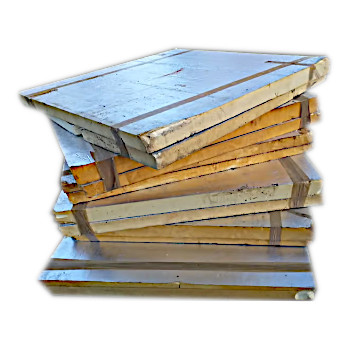 PIR rigid insulation board is widely known in the UK. It comes with aluminium foil on both sides, is water-resistant, but it's incredibly challenging to cut. While its structure resembles foam, cutting it cleanly often poses significant challenges even for the most experienced installers. To learn the best cutting techniques for this material, click here
PIR rigid insulation board is widely known in the UK. It comes with aluminium foil on both sides, is water-resistant, but it's incredibly challenging to cut. While its structure resembles foam, cutting it cleanly often poses significant challenges even for the most experienced installers. To learn the best cutting techniques for this material, click here
PIR rigid foam doesn't forgive installation mistakes; once cut incorrectly, it should not be glued back together.
Its seams usually create thermal bridges because its rigid edges don't fit together as snugly as in the case of glass wool. Nevertheless, PIR remains the most commonly used insulation material in the UK, despite its cutting difficulties.
WHAT CAN GO WRONG WITH PIR RIGID INSULATION ?
-Installation gaps: can pose challenges when it comes to installation on uneven or unstable roof rafters. If these boards are not properly secured and connected, they can leave gaps in the insulation, creating thermal bridges.
-Cutting: PIR is a relatively rigid material, making it difficult to cut, especially if precise shapes are required. Specialised tools or techniques may be necessary for cutting, potentially increasing installation costs.
PHENOLIC INSULATION BOARDS
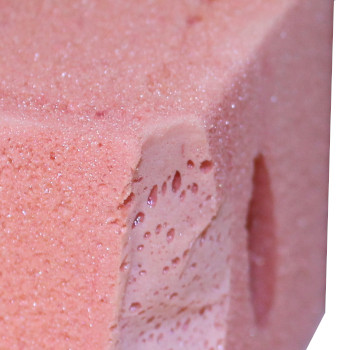 Phenolic boards are widely recognized for their exceptional thermal properties, reaching as low as 0.0018W/mK. They are considered a premium insulation material compared to others. Additionally, they offer unique solutions for space-constrained situations.
Phenolic boards are widely recognized for their exceptional thermal properties, reaching as low as 0.0018W/mK. They are considered a premium insulation material compared to others. Additionally, they offer unique solutions for space-constrained situations.
However, one significant drawback observed with phenolic boards is their chemical reaction with metals.
After just a few years, metals can degrade due to advancing rust, which, in the case of roofs, can pose a life-threatening hazard. To mitigate this risk, the installation of this product is carried out with spacers, and its surface should never come into direct contact with any metal coating.
WHAT CAN GO WRONG WITH PHENOLIC BOARDS?
-Rust issues: moisture can accumulate between the boards and the metal sheets, potentially causing rust and corrosion issues.
-Fire consequences: while phenolic boards are generally fire-resistant, they can emit toxic fumes
WHAT TO CONSIDER WHEN CHOOSING INSULATION MATERIAL?
Regardless of the price offered by the building merchants, there are several factors to consider when purchasing insulation. Here are the key considerations you should take into account when buying insulation material:
Compression:
Over-compressing insulation reduces its ability to trap air, diminishing its thermal performance. This often occurs when insulation is squeezed into tight spaces or under heavy loads. Therefore, make sure that the insulation you choose is either rigid or not easily compressible. Rigid foams like PIR or Phenolic boards are certainly not compressible, which means that regardless of how you install them, they will not lose their thermal properties. For example, mineral wool loses its thermal properties when compressed.
Moisture Accumulation:
Insulation materials can trap moisture if not properly sealed or protected. Moisture accumulation can reduce insulation R-value and lead to structural damage. Proper moisture barriers and ventilation are essential in preventing this issue. To illustrate this, mineral wool is rarely used on the exterior, as it is typically an insulation material used exclusively indoors. On the other hand, extruded polystyrene (XPS) and PIR demonstrate high water resistance and can be confidently used outdoors.
Rodent and Pest Infestations:
Insulation can attract rodents and pests if not adequately sealed or protected. These animals can damage insulation and create unsanitary conditions. Make sure not to use polystyrene for roof insulation. If you use it for insulating external walls, cover it with thin coat render. Rock wool is an excellent choice in this regard as it discourages mouse infestations, and when they do occur, most of the offspring are blind.
Settling:
Over time, some insulation materials may settle, reducing their effectiveness. This can leave gaps in your insulation layers. Using insulation materials that are less prone to settling and installing them correctly can mitigate this issue. Therefore, rigid board insulation is often the best choice
Fire Hazards:
Some insulation materials can be flammable if not adequately protected. Rock wool is an A1-class insulation material, which means it is entirely non-combustible. In comparison, polystyrene is in the E-F fire class and can self-ignite at 80 ℃. Phenolic boards are self-extinguishing and relatively fire-resistant.
Costly Repairs and Replacements:
Fixing insulation problems can be expensive, especially if they are discovered after construction is complete. Some insulation materials are not repairable. A prime example is EPS (expanded polystyrene) used in External Wall Insulation (EWI) systems. Once the thin coat render layer is applied, it is irreparable, and fixing it would involve removing the entire system from the external wall. On the other hand, mineral wools are relatively quick to repair. Their replacement involves removing the damaged portion and replacing it with a new one. PIR and Phenolic boards are usually repaired using low expansion foam.
CONCLUSION
In conclusion,when fire resistance is a critical factor, mineral wool stands out as an excellent choice due to its inherent fire-resistant properties. For cost-effective external wall insulation, EPS (Expanded Polystyrene) can be a suitable option, especially when coated with a thin coat render for added protection. XPS (Extruded Polystyrene) insulation is a dependable choice for high-load-bearing floors. However, it's important to note that it may not be suitable for electrical wiring installations. PIR (Polyisocyanurate) rigid foam insulation emerges as a versatile and high-performance solution, boasting a low thermal conductivity coefficient (λ value of 0.0022). Despite its challenging cutting process, PIR foam insulation does not settle over the years, unlike some other materials such as the cheapest glass wool.
When it comes to achieving the best thermal performance, phenolic boards are the top choice. However, this comes with a higher price tag. It's important to note that they should not be in direct contact with metal, as this can lead to rusting issues. Therefore, proper separation from metal components are essential to preserve their durability and thermal insulation effectiveness.
Related articles:
DEFEND YOUR HOME: SUPERIOR SPRAY FOAM AND FOIL INSULATION TO OUTSMART MICE!
HOW TO CUT A PIR INSULATION BOARD?
*All the information provided in the content published on Insulationgo blog is for informational and educational purposes only. Insulationgo LTD makes every effort to ensure the accuracy and timeliness of the content, but we do not assume any responsibility for any errors or omissions.
The information presented on this blog should not be considered as professional advice or a substitute for consulting relevant experts. Before making any purchase decisions or taking action based on the information presented here, it is strongly recommended to contact the product manufacturer directly to verify the details and ensure its suitability for your specific needs.
Any descriptions, drawings, photographs, data, proportions, weights, measured values etc. given herein may change without prior notice and do not constitute the agreed contractual quality of the products. It is the responsibility of the recipient of all products to ensure that any proprietary rights and existing laws and legislation are observed.
By using this blog, you acknowledge and agree that Insulationgo LTD shall not be held liable for any damages, losses, or inconveniences arising from the use or reliance on the information provided herein. This limitation of liability applies to all users of the blog, including but not limited to visitors, readers, and subscribers.










































































































